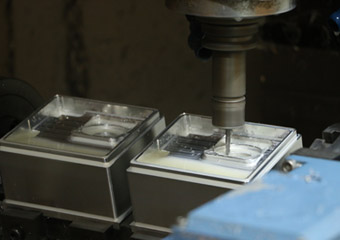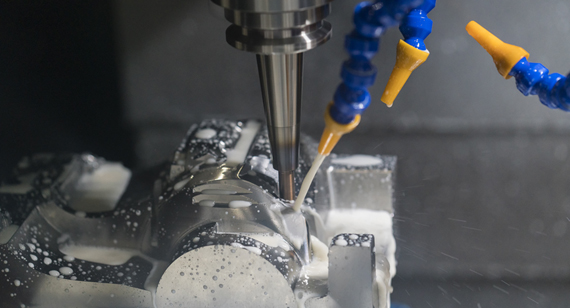15 years one-stop China custom CNC machining parts factory
 497 |
Published by VMT at Oct 19 2024
497 |
Published by VMT at Oct 19 2024
In machining, vibrations can significantly affect quality, tool life, machine longevity, and productivity. Understanding the origins, consequences, and methods for reducing or avoiding vibration is essential to achieving precise and efficient machining results. By addressing vibration issues, manufacturers can optimize performance, minimize operational disruptions, and meet high standards in dimensional accuracy and surface finish quality.
Machining vibration occurs due to dynamic forces generated during cutting operations, where the tool and workpiece interact. This vibration manifests in different forms and intensities, influenced by the machine setup, tooling, cutting parameters, and even the workpiece material. When vibrations are left unmanaged, they can lead to irregular finishes, reduced tool life, and even premature machine wear. Recognizing the characteristics and sources of vibration in machining provides the basis for developing effective strategies to mitigate it.
Chatter in machining refers to the oscillatory motion between the cutting tool and the workpiece during operation. This motion can be generated from a variety of sources, including the spindle, tooling, or the interaction of the tool and material being cut. The severity of vibration varies with factors like tool length, machine rigidity, cutting speed, feed rate, and depth of cut. Chatter can cause a phenomenon known as chatter, which not only affects the quality of the machined part but also places undue stress on the machine and tool, reducing their lifespan.
Chatter issues are complex, as they often originate from a combination of machine components, cutting parameters, and even environmental factors. For manufacturers, understanding the distinct forms of vibration and their causes is critical for achieving smoother machining operations.

Machining Chatter Has Two Forms, Namely: Resonance and Non-Resonant Chatter
In machining, vibrations are primarily classified into resonant and non-resonant types. Each type has distinct characteristics, causes, and strategies for control.
Resonant Chatter
Resonant vibration occurs when the natural frequency of the machine or tool matches the frequency generated by the machining operation. When this alignment happens, the tool and machine components resonate, causing intensified vibration levels, known as chatter. This type of vibration is particularly challenging as it is self-amplifying; once it begins, it can quickly escalate and disrupt the machining process. Resonant vibration is typically controlled by adjusting the speed or feed rate, altering tool overhang, or modifying machine setup to avoid frequencies that match the system’s natural frequency.
Non-Resonant Chatter
Non-resonant vibration arises from external or transient forces unrelated to the system's natural frequency. This includes vibrations induced by unbalanced components, uneven workholding, or variable material properties. Non-resonant vibrations are generally more manageable, as they are not self-reinforcing. Effective non-resonant vibration control focuses on improving stability through adjustments to tooling, workholding, and machining parameters.
Understanding the difference between resonant and non-resonant vibration helps manufacturers develop precise methods for mitigating each type, ensuring smoother machining operations.
Tool Chatter
Tool chatter, a common form of resonant vibration, occurs when the tool and workpiece vibrate against each other at an undesired frequency. It is characterized by a distinctive, loud sound and irregular patterns on the part’s surface. Tool chatter typically happens due to excessive tool overhang, high cutting speeds, or insufficient rigidity in the tool or machine setup. Chatter marks, which are visible patterns left on the machined surface, are a clear indication of tool chatter and signal the need for adjustments to cutting parameters or tool selection.
Workpiece Chatter
Workpiece vibration happens when the workpiece itself oscillates, either due to unstable workholding or flexibility in the workpiece material. This is especially common in machining operations involving long, thin, or lightweight workpieces, where rigidity is compromised. Workpiece vibration affects surface finish and dimensional accuracy, and if left unchecked, it can result in scrapped parts. Managing workpiece vibration involves ensuring secure workholding, optimizing fixture design, and modifying cutting parameters to reduce forces on the workpiece.
Machining vibrations have several adverse effects that impact quality, efficiency, and operational costs. Below are the primary consequences of unchecked vibration.

Shortened Tool Life
Excessive vibration accelerates wear on cutting tools, as oscillatory forces create uneven contact and unpredictable stress patterns. This leads to chipping, fracture, or rapid blunting of the tool's cutting edge. With shortened tool life, tooling costs increase, as tools require more frequent replacement. To mitigate this, managing vibration is essential for maximizing the lifespan of cutting tools and reducing tooling costs.
Shortened Machine Life
Chatter does not only affect the tool but also imposes strain on the entire machine, especially spindle and axis components. Continuous exposure to vibration can lead to premature failure of machine components, requiring costly repairs or even early replacement of the machine. By reducing vibration, manufacturers can extend the life of CNC machines and lower maintenance costs.
Poor Surface Finish
Surface finish is significantly impacted by machining vibration. Chatters lead to inconsistent cuts, resulting in rough or irregular surface textures, often characterized by visible chatter marks. These irregularities affect the aesthetics and functionality of the part, potentially requiring additional finishing steps or causing rejection due to non-compliance with quality standards.
Reduced Dimensional Accuracy
Chatters can cause small shifts in tool positioning, leading to inaccuracies in part dimensions. In industries where tight tolerances are critical, such as aerospace and medical device manufacturing, even minor dimensional errors can be unacceptable. Maintaining stability during machining is crucial for achieving precise, repeatable part dimensions.
Effective vibration reduction in machining involves a combination of strategies related to machining parameters, tooling, workholding, and machine maintenance.

Optimize Machining Strategies
Choosing the right machining strategy is essential for minimizing vibration. Adjusting the depth of cut, feed rate, and spindle speed to avoid resonant frequencies can significantly reduce vibration. For example, lighter cuts and slower speeds often result in less vibration. Using a constant tool engagement approach can also help maintain steady force levels, reducing the chances of resonance.
Adopt the Right Workholding Style
Securing the workpiece with the proper workholding setup is critical in preventing vibration, especially for large or complex parts. Workholding should be selected based on the part's geometry, weight, and material. Rigid fixtures, clamps, and custom jigs are effective for enhancing stability, while dampening pads can absorb vibration, particularly for sensitive parts.
Use the Right Cutting Tool
Choosing appropriate tooling is vital for controlling vibration. Here are some factors to consider:
Tool Coating: Coated tools reduce friction and heat, which minimizes the chances of vibration by promoting smoother cutting.
Proper Substrate Geometry: A tool with the right geometry for the application reduces forces exerted on the tool and part.
Aspect Ratio of the Tool: The overhang length of the tool should be minimized, as longer overhangs are more prone to resonance.
Determine the Ideal Tool Path
Optimizing the tool path to avoid abrupt direction changes helps maintain steady forces on the workpiece, reducing the risk of vibration. Programs that offer smoother transitions between cuts can help control tool vibration.
Machine Setup and Maintenance
A well-maintained machine is less likely to produce vibration. Regular maintenance of the spindle, bearings, and motor ensures the machine runs smoothly. Aligning the machine components and checking for wear in moving parts can also prevent vibration issues.
At VMT, we specialize in providing custom CNC machining solutions that address complex machining challenges, including vibration control. Our advanced facilities and experienced team are dedicated to delivering precision machining solutions that meet our clients' high standards for quality and accuracy. With a focus on optimizing every aspect of the machining process, from tool selection to workholding and machine maintenance, VMT is a reliable partner for achieving exceptional CNC machining results.

Chatter in machining is a critical issue that can affect tool life, machine longevity, surface finish, and dimensional accuracy. By understanding the causes of vibration and implementing effective strategies, manufacturers can achieve smoother machining processes and higher-quality parts. Partnering with a CNC machining provider like VMT can further enhance vibration control through customized solutions, allowing businesses to meet their precise machining needs effectively and economically.
What is the difference between vibration and chatter?
Chatter refers to any oscillatory motion between tool and workpiece, while chatter is a self-excited, resonant vibration that significantly impacts machining quality and surface finish.
How to remove chatter marks in machining?
Chatter marks can often be reduced by adjusting cutting speed, modifying the tool path, or using a more rigid tool and workholding setup.
What are chatter marks in machining?
Chatter marks are irregular patterns on the machined surface caused by excessive vibration or tool chatter during cutting.
What causes chatter in machining operations?
Chatter is typically caused by resonance, where the tool or workpiece vibrates at a frequency matching the machine's natural frequency.
What causes vibration in rotating equipment?
Chatter in rotating equipment can result from imbalance, misalignment, or inadequate lubrication, among other factors.
How to identify chatter in machining?
Chatter is typically identified by a distinct noise, visible surface marks, and often reduced cutting performance.
What are the different types of chatter in machining?
Common types include primary chatter, secondary chatter, and regenerative chatter, each caused by different dynamics in the cutting process.
